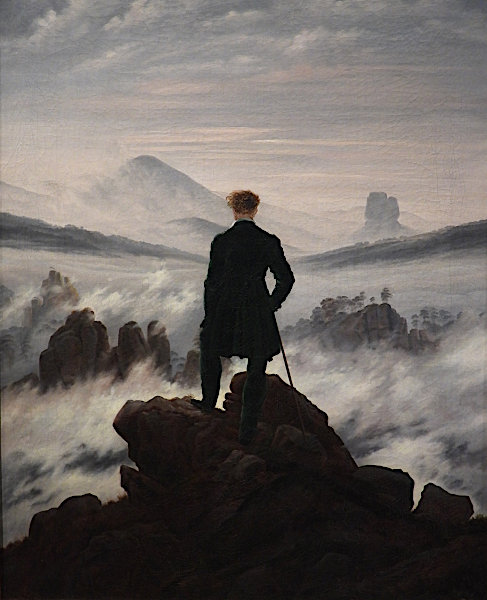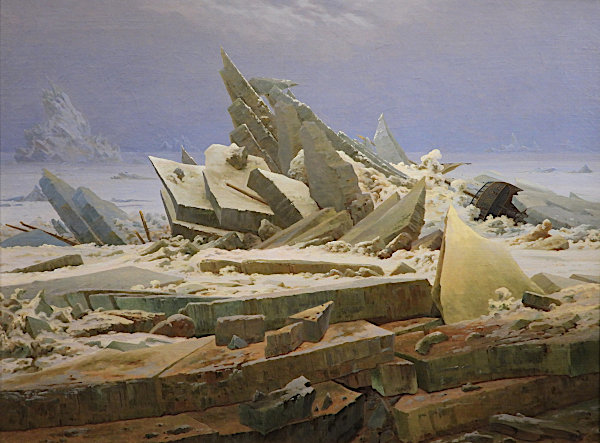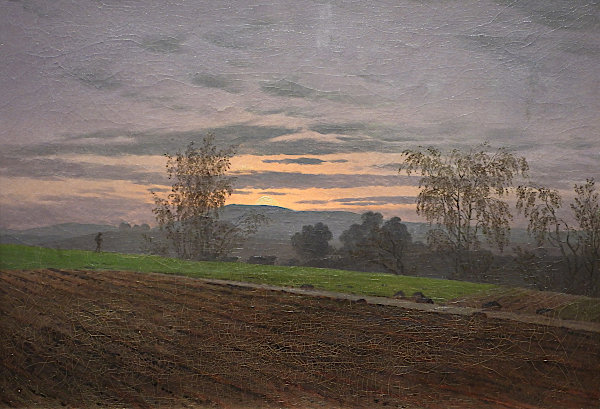Caspar David Friedrich was born in Greifswald in 1774. He was the sixth of ten
children of the tallow soap maker and tallow candle maker Adolph Gottlieb Friedrich
and his wife.
In 1794, Friedrich began studying at the Royal Danish Academy of Art in Copenhagen.
At C.D.Friedrich's time, the styles "Baroque" and "Classicism" dominated. Scenes
from the Bible, ancient allegories or depictions of princely power predominated
in the artistic depictions of this time.
From 1800 onwards, Caspar David Friedrich increasingly developed his own personal style, which emphasized his own emotional view of landscape scenes. Instead of baroque overloaded images of saints or ancient deities, Friedrich painted emotional landscape pictures.
In this respect he is a revolutionary who developed a completely new style. He looked at the landscape in his immediate surroundings with complete amazement, with deep awe, with a lot of emotion and a touch of melancholy. The landscape is rough, wild, powerful and beautiful - even "romantic".


Influenced by his religious upbringing, he associated the sight of the landscape with corresponding symbols such as church ruins, crosses, altars, etc. His sometimes patriotic allusions were due to the spirit of the times under the French occupation by Napoleon.
I feel Friedrich's pictures most strongly when he shows the pure dialogue between nature and humanity without any pious symbolism or patriotic attitude.

He further developed his personal view by including the viewer in his painting - sometimes small and on the edge in comparison to the vast landscape - or centrally and sometimes blocking the view of the spectator, but always in a back pose to the viewer of the picture.
So in his paintings you can always see a dialogue between viewer and landscape.
"The painter should not only paint what he sees in front of him, but also
what he sees within himself. So if he doesn't see anything in himself, he should also refrain
from painting what he sees in front of him."
Inscription on the CDF monument in Dresden.
Tanja Soler Zang - April 2024